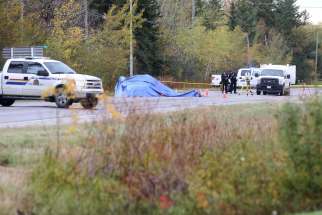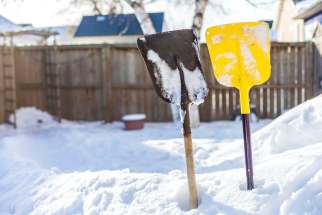The mighty quinzhee Excavating a snowy shelter is the perfect project for a Winnipeg winter afternoon
Read this article for free:
or
Already have an account? Log in here »
To continue reading, please subscribe:
Monthly Digital Subscription
$0 for the first 4 weeks*
- Enjoy unlimited reading on winnipegfreepress.com
- Read the E-Edition, our digital replica newspaper
- Access News Break, our award-winning app
- Play interactive puzzles
*No charge for 4 weeks then price increases to the regular rate of $19.00 plus GST every four weeks. Offer available to new and qualified returning subscribers only. Cancel any time.
Monthly Digital Subscription
$4.75/week*
- Enjoy unlimited reading on winnipegfreepress.com
- Read the E-Edition, our digital replica newspaper
- Access News Break, our award-winning app
- Play interactive puzzles
*Billed as $19 plus GST every four weeks. Cancel any time.
To continue reading, please subscribe:
Add Free Press access to your Brandon Sun subscription for only an additional
$1 for the first 4 weeks*
*Your next subscription payment will increase by $1.00 and you will be charged $16.99 plus GST for four weeks. After four weeks, your payment will increase to $23.99 plus GST every four weeks.
Read unlimited articles for free today:
or
Already have an account? Log in here »
Hey there, time traveller!
This article was published 18/01/2021 (1790 days ago), so information in it may no longer be current.
Do you want to build a quinzhee? Of course you do.
It’s essentially a massive snow mound, excavated through a small entryway, that can be big enough to sit in or sleep in, cosy enough to stay warm in, and enjoyable enough to keep a family entertained and occupied for hours. From the Dene or Slavey, meaning “little home” a quinzhee, or quinzee, is a form of winter architecture that requires nothing more than cold weather, a scoop shovel, powdery snow and a little bit of patience.
That makes it the perfect project for outdoor winter fun in Winnipeg.
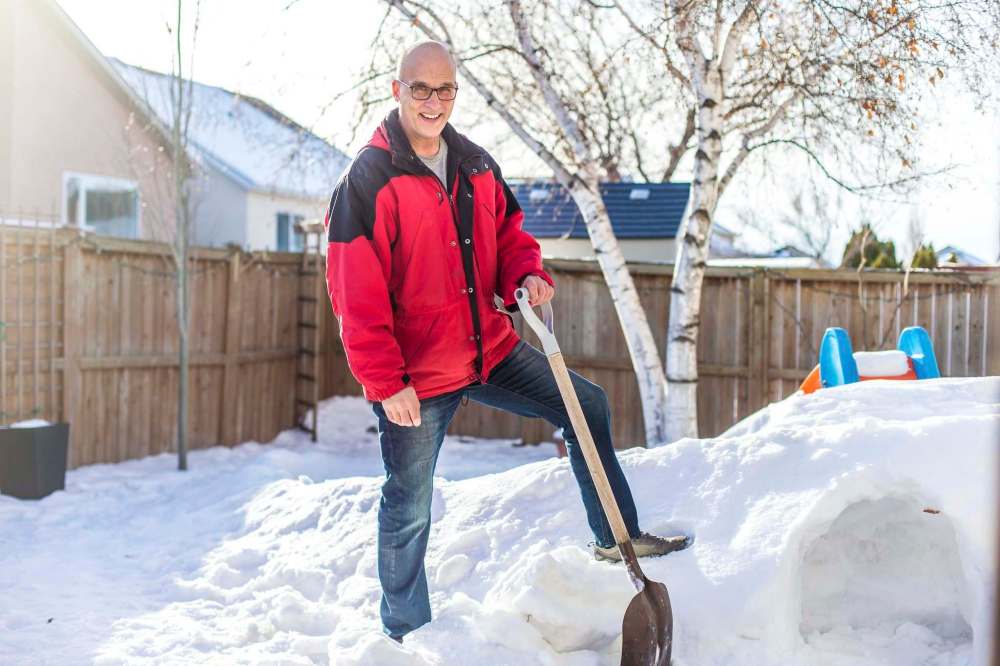
“The beauty of a quinzhee is you can build it pretty much anywhere you have enough snow,” says Gordon Giesbrecht, a University of Manitoba professor of environmental physiology, known as Dr. Popsicle for his research on how humans interact with the cold. “There’s no rocket science to this,” he says.
But there is a methodology: Giesbrecht built his first quinzhee more than 40 years ago as a wilderness instructor in Alberta, and has taught dozens of people how to build a successful quinzhee. Here are some steps.
1. Assess your conditions and plan your structure
Before even starting to pile, a quinzhee builder has to have the proper conditions to begin the project, says Giesbrecht.
Make sure there’s enough space to build: Giesbrecht recommends about an eight-foot (2.4-metre) diameter spot for the quinzhee, big enough to support a mound just over six feet tall (about two metres). Check the temperature: the colder it is, the less time it takes for the mound to solidify, so it might be preferable to build your quinzhee when it’s -10 to -15 C outside than when it’s closer to zero.
You can pile on a warm day, but you’ll have to wait longer to begin the excavation. Waiting until the snow is hardened is essential to ensure structural integrity.
2. Check your equipment, and make sure you have a good team
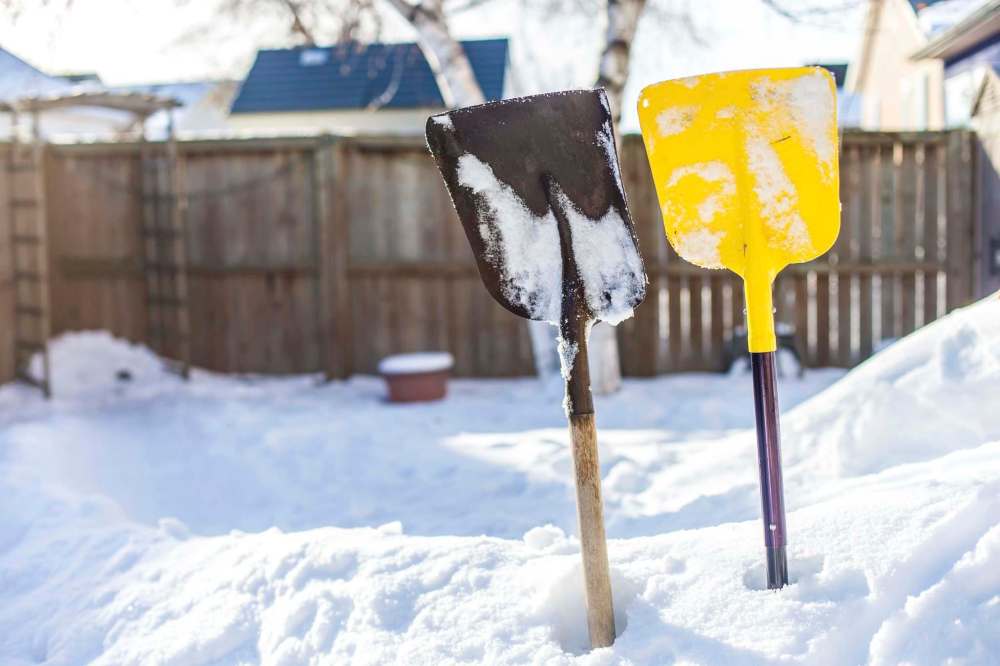
Luckily, all you need are snow, cold temperatures and a scoop shovel, says Giesbrecht, “not the type you clear your driveway with.” The smaller scoop shovel enables the excavator, or “the mole,” to dig purposefully and nimbly.
If you are “the mole,” be sure to dress warmly, but not too warmly. “It gets hot in there,” Giesbrecht says, so have a hood or a tuque, and a water-resistant shell. Also make sure you have a dry set of clothing set aside for afterward.
The most important piece of equipment is a building partner or team, as building alone can be difficult and even dangerous: much like swimming with a lifeguard nearby, make sure you have a support close to you, just in case, as it’s always better to be safe than sorry.
3. Start at the foundation, and start piling
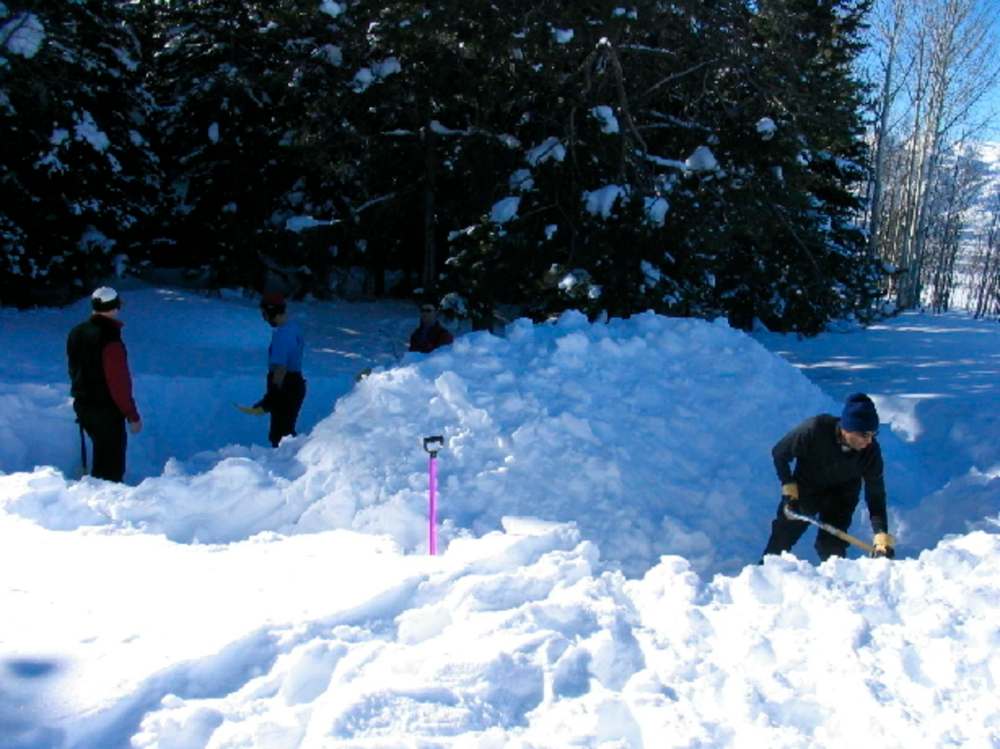
Much like a traditional house, a quinzhee requires a solid foundation: the snow at the base has to be stomped down and flattened. You can use a tarp as a base if you have one around.
Once you’ve done that, Giesbrecht says it’s time to begin the pile. When doing this, the snow matters: you don’t want chunks, but powdery snow, so that when you toss it and it lands at the centre of the eight-foot diameter, the particles bond with each other and form a hard snowpack. If there are chunks, stomp them down.
“If it’s chunky, it’s not going to form together,” Giesbrecht says.
The pile should be about two metres high, and in order to build taller, the diameter has to increase as well. Fill the planned diameter with snow to form the mound.
4. Let it settle and solidify

“The colder it is, the quicker the pile solidifies,” Giesbrecht says. If it’s warm, give it a few hours, then check and use your judgment before excavating. If it’s cold, it could be ready by the time the pile is done. Still, exercise caution and judgment.
5. Draw out an entrance
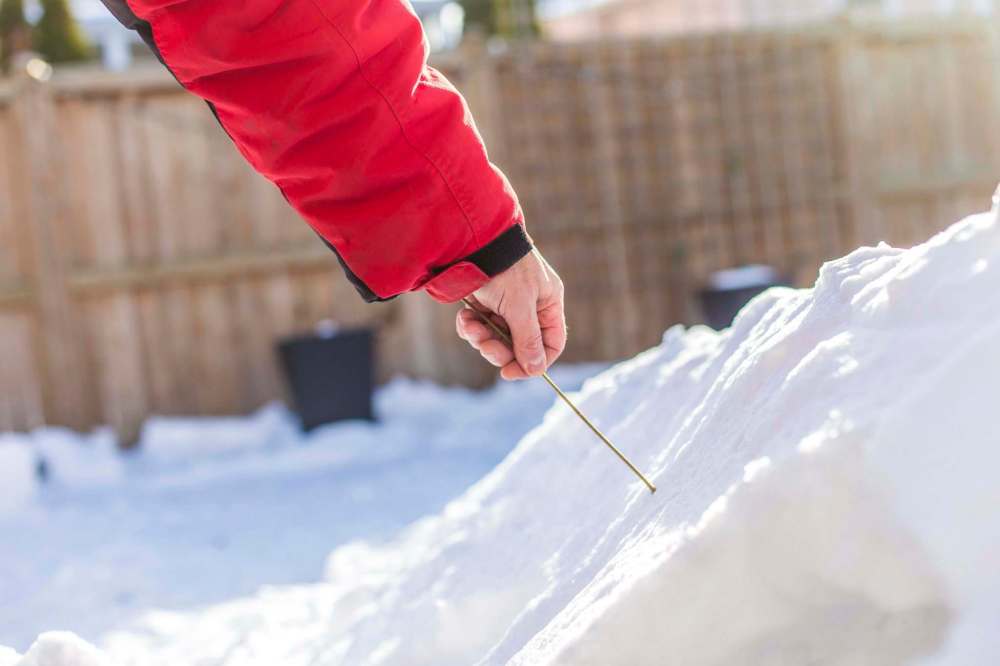
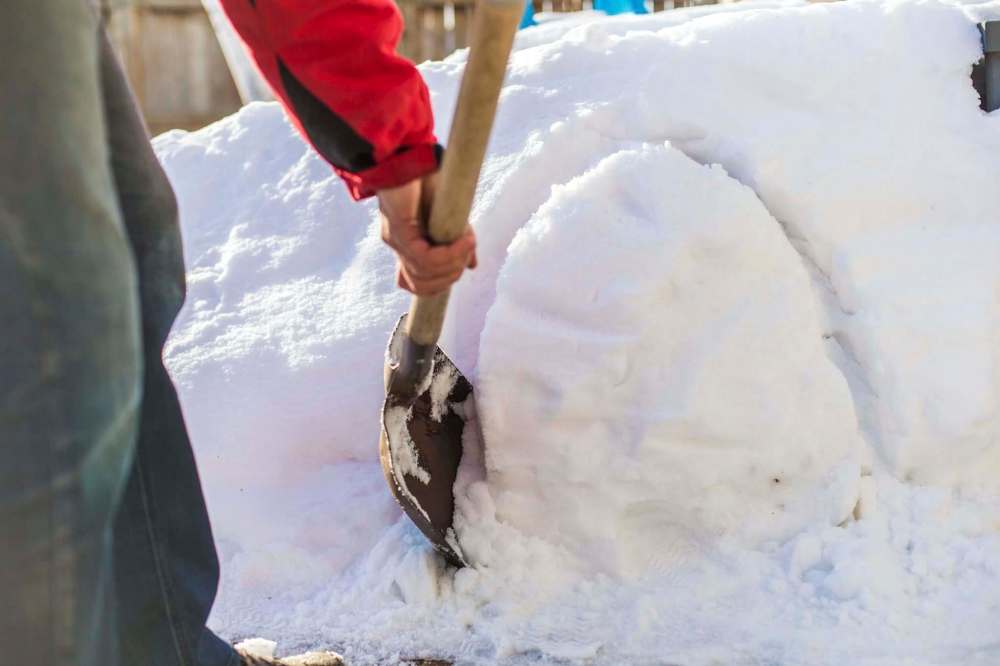
To enjoy the quinzhee, you have to get inside. So using a stick or the edge of your shovel, trace out a small doorway, big enough to slide in through but also small enough to be able to retain heat. Giesbrecht recommends about 60 to 90 centimtres high and about 60 centimetres, or a couple of feet, wide.
Give the entryway a rounded top and be sure its size is big enough for you to fit through.
6. Dig in, and dig up

Once the snow is settled, the “mole” can begin digging. One of the most important jobs here is to dig in and up, to prevent the snow from caving in.
A student of Giesbrecht’s once made the mistake of digging a tunnel straight in, without excavating upward as he went, leading to a cave-in; a friend had to dig him out. This illustrates why it’s important to have a partner or team approach to quinzhee-building.
“Quinzhee-building is not without some risk,” Giesbrecht says.
At first, digging is done from the outside, drawing the snow out and clearing the entryway. But as the “mole” moves inside, the teammate can help clear the snow they’re removing.
7. Once inside digging, stay on your knees, not on your back
You don’t want to be caught lying on your back like a mechanic under a car with a quinzhee mound collapsing on you. “If I’m on my knees, I can push myself up with my arms and legs,” says Giesbrecht. “On your back, you’re like a turtle flipped over.”
8. Give your quinzhee a blowhole
In a quinzhee, ventilation is important, so poke a hole or two in the roof, big enough to promote circulation without affecting the structure. “You don’t want to close yourself in this thing completely,” Giesbrecht says. Without proper circulation, breathing will be difficult and in extreme circumstances, hypoxia can happen.
Make sure the holes stay open to ensure your safety.
9. Understand the importance of wall thickness
Once excavated, the interior can be shaved down, and the thickness of a quinzhee’s walls is integral to the structure’s security and your safety. Giesbrecht says the base area of the walls should be between eight inches and a foot thick (20 to 30 cm), to establish a solid base.
As the walls go higher, they should also get thinner, with a depth of four to six inches (10 to 15 cm). This is structurally important to prevent cave-ins, but also important when it comes to light: the thinner walls at the top keep the interior of the quinzhee illuminated during daylight hours.
To gauge thickness and to keep track, Giesbrecht recommends using sticks that are roughly the desired lengths and sticking them in the wall to track thickness. The sticks act as an indicator of when you’ve shaved too much, or too little. He’s not talking about one or two sticks: 20 or more could be stuck in to keep thickness even.
10. Smooth down the walls
You want your interior walls to be smooth, with minimal juts. This is important because as you breathe, condensation occurs, and if the walls are not smooth, water will drip down on you. If they’re smooth, the water will run down the side, keeping you dry.
11. Check your structure
If you’ve followed the above steps, your quinzhee should be in good shape. But it’s always a good idea to run through a checklist to make sure it’s safe and ready to use: Are the walls strong? Is the ventilation hole clear? Do I have a partner or teammate around? Am I wearing the proper winter attire? Have I told someone I’m planning to go in?
If the answers are yes, it’s time to move to the next step.
12. Enjoy, and personalize
Once built, the quinzhee can be a great place to hang out with people living in your household. Play cards in there, unplug, play pretend, the potential is vast.
Do not build a fire inside, says Giesbrecht. “Absolutely not.” Don’t bring a kerosene lantern inside either. “Bad idea.” A candle, preferably one in a container or a candle lantern, is fair game, but make sure you keep it away from flammable materials and discuss fire safety with one another.
Maybe you want to give your quinzhee a name? Make a homemade flag and stick it in the ground next to it. (Quinzhipeg is my suggestion). Use food colouring to create fun designs on the outside. Build a second quinzhee if you need a vacation home.
When it gets too warm, say goodbye to your quinzhee. You had a good run. You really did.
ben.waldman@freepress.mb.ca

Ben Waldman covers a little bit of everything for the Free Press.
Our newsroom depends on a growing audience of readers to power our journalism. If you are not a paid reader, please consider becoming a subscriber.
Our newsroom depends on its audience of readers to power our journalism. Thank you for your support.



